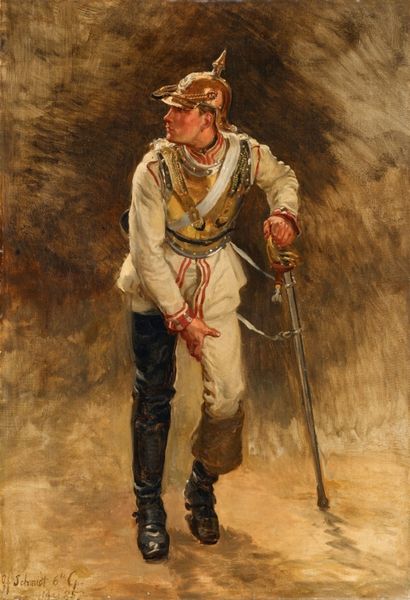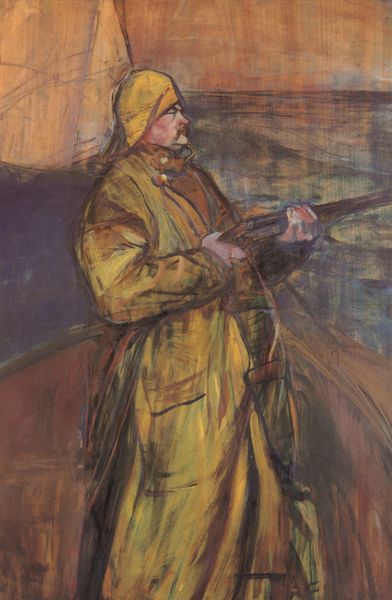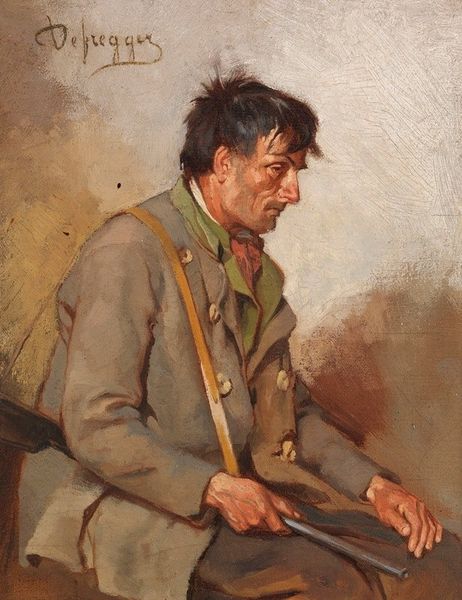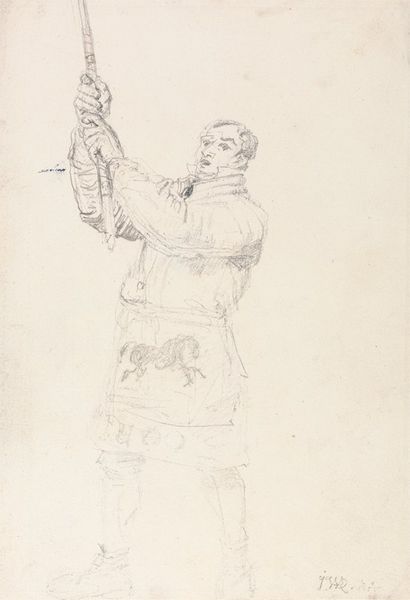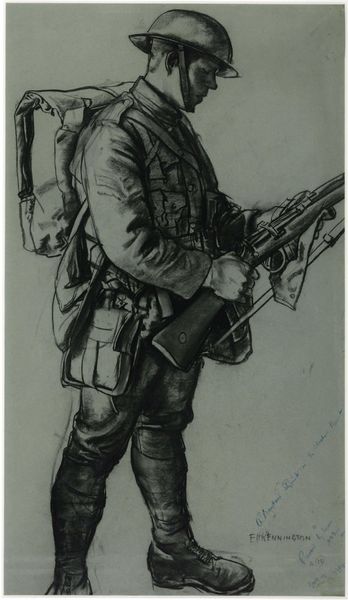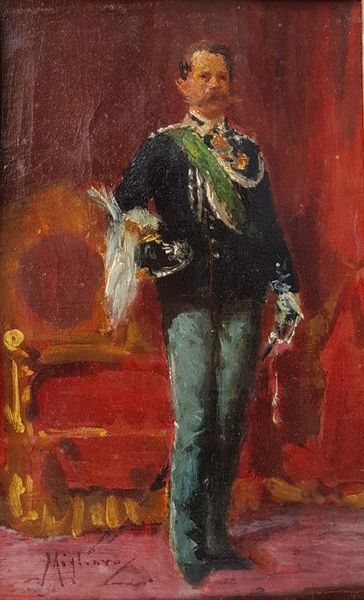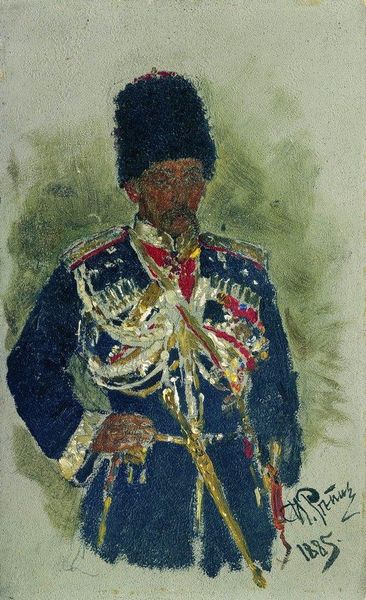
oil-paint
#
portrait
#
figurative
#
oil-paint
#
oil painting
#
romanticism
#
genre-painting
#
realism
Copyright: Public Domain: Artvee
Curator: At first glance, this oil sketch exudes a sense of contained anxiety, don’t you think? There’s a certain… rigidity suggested by the back of the figure and the tense posture. Editor: Yes, that tension is palpable! What we're looking at is “Cavalry Man,” a painting attributed to Ernest Meissonier. Notice how he doesn’t give us the soldier’s face, and it amplifies that anxious feeling you mentioned, focusing instead on the impressive uniform and military bearing. Curator: Absolutely. It's the *idea* of the soldier, the iconography of military power, not an individual we are meant to identify with. All those ornate buttons create a powerful statement about the uniform itself and what it represents—regimented order and hierarchy. The high fur collar and elaborate trim give him an almost animalistic appearance. Editor: And Meissonier was very intentional in presenting these symbols. He made a name for himself, particularly during and after the Franco-Prussian war, by documenting military life. He presented it, romanticized as it often was, to a fascinated public. This study of a cavalry man, as well as his other paintings depicting conflict, tapped into anxieties regarding military strength in a changing Europe. Curator: Indeed. The power and potential ruthlessness behind that green and white trimmed tunic and tall, furry hat. It feels a bit detached though, perhaps purposefully, since we’re seeing it through the lens of Romanticism tinged with Realism. It shows what war *is*, not how it’s fought. I keep coming back to that tension; he's turned away from us as if awaiting orders, or perhaps, avoiding witnessing something awful. Editor: Precisely. And I see that same tension in the way he employs loose brushstrokes, leaving much of the wood panel exposed. There’s something very raw and unresolved here, and that tension only strengthens the political messages conveyed. The overall lack of information gives this piece a psychological weight to it. Curator: You know, reflecting on the symbolism and that visual tension you noticed, it does offer a striking portrayal of power and anxiety in one swift image. Editor: I agree; viewing this painting through a historical lens really emphasizes Meissonier’s perspective on national identity, political and cultural forces and how he captured his vision during a critical time.
Comments
No comments
Be the first to comment and join the conversation on the ultimate creative platform.
